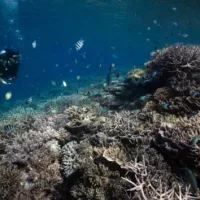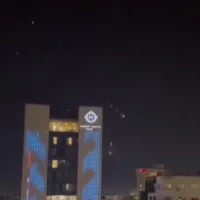
 iStock/Thinkstock(WASHINGTON) — As the war of words ratchets up between North Korea and Donald Trump, some cities and other areas within the zone of a possible strike are taking steps to prepare their residents.
iStock/Thinkstock(WASHINGTON) — As the war of words ratchets up between North Korea and Donald Trump, some cities and other areas within the zone of a possible strike are taking steps to prepare their residents.
While many pieces of the North Korean nuclear puzzle remain unknown, such as whether a rocket could survive reentry, as well as whether the country’s leader, Kim Jong Un, will act, some localities are taking measured steps in that direction.
Officials in Hawaii and now Guam have released updated preparedness plans and warning sheets for how their citizens should react in case of a nuclear detonation or imminent missile threat.
The threat of possible missile attack, which North Korea has explicitly made against Guam, prompted the release of several fact sheets on a government website.
Hawaiian officials also updated their guidance in recent weeks.
But many other American cities appear to be taking a more limited approach, pointing residents towards existing plans to address a wide array of natural and man made disasters.
Top U.S. officials have also urged calm, including Secretary of State Rex Tillerson, who said Americans should “sleep well at night.”
How Guam is preparing residents
The website for Guam’s Homeland Security Office of Civil Defense has been updated recently with a number of fact sheets detailing the emergency alert system and giving tips on what to do before, during and after an imminent missile threat.
One of the fliers, “preparing for an imminent missile threat,” instructs readers to listen for official information and emergency guidance, take cover, stay inside and not to look at the flash or fireball if caught outside in order to avoid being blinded.
The site also redirects visitors to websites run by the Centers for Disease Control and federal government sites dedicated to building emergency supply kits, tips for sheltering in place and preparing their pets for disasters.
On Wednesday, the offices of Guam Homeland Security and Civil Defense released a statement saying that their military partners “continue to monitor the recent events surrounding North Korea and their threatening actions.”
The statement went on to say that Guam’s homeland security adviser George Charfauros “has not received any statement that there is an imminent threat.”
Guam Gov. Eddie Calvo told Reuters Wednesday after that threat was made that he thinks that North Korea is operating from “a position of fear.”
“At this point, based on what facts are known, there is no need to have any concern regards heightening the threat level,” Calvo said.
On Friday, Calvo held a briefing during which he said the preparedness releases were published for “eventualities,” emphasizing that life should carry on as usual.
“It’s a weekend. Go out and have fun,” Calvo said.
Hawaii’s updated guidance on what to do in event of detonation
Another American island — Hawaii — recently updated its guidance on what to do in case of a nuclear detonation, posted July 21 on Hawaii Emergency Management Agency. The substance of the revision was not immediately clear.
The revised plan details how a siren will sound or emergency alert systems will notify people of a nuclear detonation in addition to the observation of a “brilliant white light (flash).”
From there, people are directed to get inside, stay inside and stay informed via radio stations or small portable walkie-talkies.
The plan notes that there are no designated blast or fallout shelters in Hawaii.
“You may have only minutes to take protective action — take immediate action without delay,” the plan states.
The plan, which is on Hawaii State Department of Defense letterhead, is labeled as being revised on June 27. No motivation for the release or update was publicly disclosed on the Hawaii Emergency Management Agency.
ABC News reached out to the state’s emergency management agency, but did not immediately get a response.
Ground-based interceptor system protects Alaska and continental U.S.
The ground-based interceptor system is in place to defend Alaska and the mainland United States against long-range missiles.
There are 32 ground-based interceptors at Fort Greely, Alaska, and an additional four at Vandenberg Air Force Base in California. The missiles have just over a 50-percent success rate in intercepting incoming long-range missiles in testing over the past decade.
“[The interceptor] would have a hard time protecting Hawaii, but it would protect Alaska and the mainland,” ABC News Aviation Consultant Steve Ganyard, a retired Marine Corps colonel, said.
One problem, however, is that it “could not handle a barrage of 10 incoming missiles. It could pick off a few, but we’re not there yet. It’s too developmental a system,” he added.
The emergency management office for Anchorage did not immediately respond to an ABC news request for comment.
The Alaska division of homeland security and emergency management does not have a specified nuclear preparedness plan and Anchorage, Alaska, takes an “all-hazards” approach which has also been adopted in cities like San Francisco and Los Angeles in California.
“During the 1980s the United States government transitioned from the old Civil Defense ‘fallout shelter’ model of the Cold War-era, to the FEMA ‘All Hazards’ approach used today,” said Andrew Preis, the Emergency Programs Manager for Anchorage. “What that means to us here in Anchorage is the same preparedness activities undertaken for a large magnitude earthquake would also apply to a nuclear threat as well.”
West Coast tells residents to heed general emergency plans
On the mainland, several population centers on the West Coast repurpose their emergency plans for other disasters, whether they be natural like earthquakes or tsunamis, or man-made like terrorism and a nuclear attack.
Washington state does not have a specified nuclear detonation plan, with much of the state’s focus being paid to possible earthquakes or tsunamis given the fault lines there.
“A nuclear strike certainly presents unique challenges but the state has exercised for and prepared for a variety of disasters and many of our response capabilities would be useful following a nuclear event,” said Karina Shagren, the spokesperson for the Washington Military Department.
Officials in both Los Angeles and San Francisco take an “all hazards” approach to emergency planning.
“The situation with North Korea has understandably caused concern about what might happen if a nuclear strike targeted and reached the Los Angeles area,” said Kate Hutton, public information officer for the City of Los Angeles Emergency Management Department. “We continue to closely monitor this situation as well as all threats and hazards we might face in Los Angeles.”
Seattle, Los Angeles and San Francisco, like most major metropolitan areas in the United States, have alert systems that residents can sign up for on their phones or via email.
“It’s a very alarming possibility and it’s concerning should something of this nature happen,” Kate Hutton, the spokesperson for the San Francisco department of emergency management, told ABC News.
Copyright © 2017, ABC Radio. All rights reserved.















